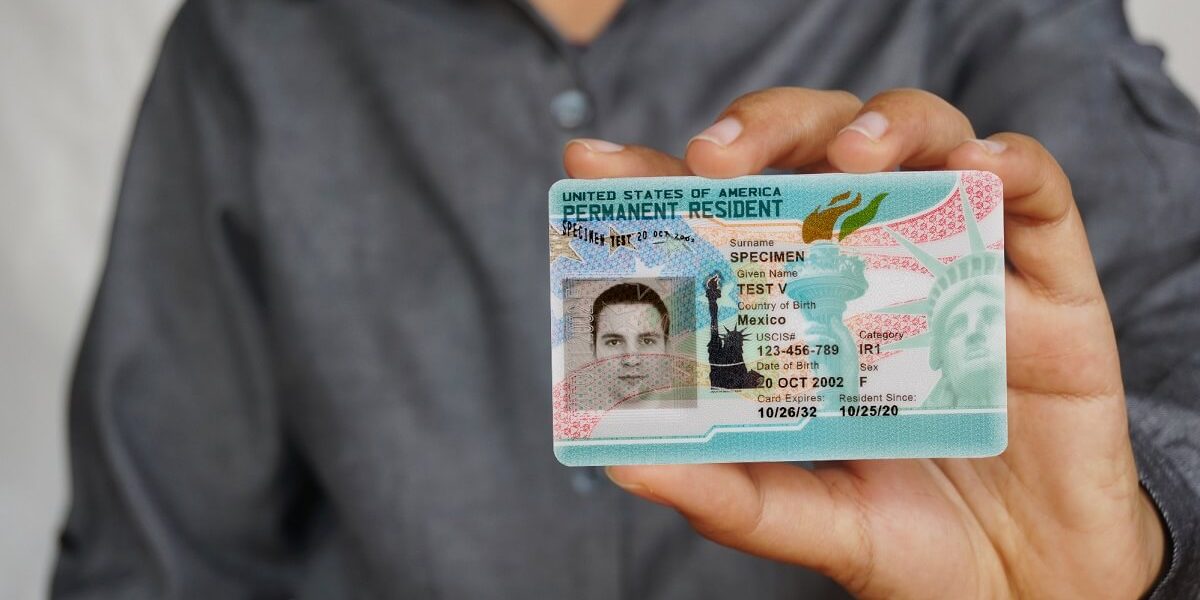Guide to Obtaining a Green Card: Navigating the Process and Meeting Requirements
Acquiring a Green Card in the United States is a pivotal step towards realizing your aspirations of permanent residency in the land of opportunity.
Living legitimately in the United States, with the freedom to establish roots without the constraints of a limited visa, requires careful navigation through the immigration process.
While you may be familiar with the term “Green Card,” the journey towards obtaining one involves a labyrinth of procedures and criteria that demand a thorough understanding.
If you find yourself grappling with questions on this subject, fret not, for this comprehensive guide is designed to illuminate the path towards securing a Green Card.
- Understanding the Green Card in the US
The Green Card symbolizes more than mere legal residency; it signifies membership in a nation of boundless opportunities.
This document bestows upon its holder the privilege of residing and working lawfully in the United States, affording freedoms that transcend borders and timelines.
With a Green Card in hand, individuals can pursue educational endeavors, embark on lucrative career paths, traverse the expanse of the nation, and partake in the quintessential American dream of homeownership.
Moreover, the Green Card extends its reach to encompass certain family members, facilitating the reunification of loved ones across oceans and continents.
However, amidst these promises of prosperity lie a labyrinth of regulations and responsibilities, underscoring the importance of meticulous adherence to the law to safeguard this cherished status.
- Who Qualifies for a Green Card in the United States?
The path to obtaining a Green Card in the US is multifaceted, with eligibility contingent upon various factors, including employment offers, specialized skills, financial investments, and familial relationships.
In essence, individuals may qualify for a Green Card if they:
Receive a full-time job offer.
Demonstrate exceptional expertise relevant to the needs of the US.
Invest a substantial sum in the American economy.
Are unmarried children under 21 or spouses of legal permanent residents.
Are first-degree relatives (parents, siblings, children, spouses) of American citizens.
As we delve deeper into the visas that confer Green Card eligibility in the US, a clearer picture of the requirements for each category shall emerge.
- Distinguishing Between a Green Card and American Citizenship
It is imperative to differentiate between a Green Card and American citizenship, as the two embody distinct legal statuses.
While a Green Card grants permanent residency and affords a myriad of rights akin to those of a citizen, including gainful employment, access to education, and participation in civic life, it falls short of conferring the full spectrum of privileges enjoyed by citizens.
American citizenship, on the other hand, represents the pinnacle of legal status, entitling individuals to vote, hold public office, and travel without restrictions.
However, the road to citizenship is paved with stringent requirements, including a minimum residency period and adherence to the naturalization process.
In essence, while a Green Card serves as a stepping stone towards citizenship, it remains a distinct legal status, subject to renewal and revocation.
- Visas That Grant a Green Card: Know the Main Ones There are two categories of visas: immigrant and non-immigrant – commonly referred to as permanent and temporary.
Non-immigrant visas (temporary) include tourism, study, and exchange activities, allowing stays in the United States for a specified period. This is also the case for the fiancé visa (K), which allows foreigners to enter the United States to marry an American citizen or resident. The marriage must take place within 90 days of entry into the country, and once the marriage is formalized, the foreign spouse must follow additional procedures to apply for adjustment of status and obtain the Green Card.
Immigrant visas (permanent) provide the holder with the opportunity to become a permanent resident, i.e., a Green Card holder in the US. Among them are the so-called employment-based (EB) and family-based visas.
Below, we’ll provide details on the main types of visas that grant the right to an American Green Card.
EB-1A
This visa is intended for individuals with extraordinary abilities in areas such as science, art, education, business, and athletics. The candidate must meet at least three of the ten established criteria, including winning excellence awards or having notable publications about them. In this case, a job offer or work certification is not required, and the professional can apply for the visa themselves.
EB-1B
This is a visa for outstanding teachers and researchers who have achieved international recognition in their academic field. Requirements include a minimum of three years of experience in the field and meeting at least two of the six specified criteria, such as winning awards and authoring or co-authoring books. Additionally, a job offer in the United States is required, although work certification is not necessary.
EB-1C
This visa is for managers or executives of multinational companies. There are three criteria to be met: having worked outside the United States for at least one year in the last three years, having a job offer in the United States for a similar position, and the employer must have been in operation for at least one year. The application must be made by the employer, and work certification is not required.
EB-2
The EB-2 visa is suitable for professionals with exceptional skills or advanced degrees. In the first condition, there are six criteria, including the need to have a license to practice in the relevant field. Individuals with a bachelor’s degree must prove five years of post-graduation experience, which is not required for those with a master’s or doctorate. The candidate must also have a job offer.
EB-2 NIW
The EB-2 NIW is for those whose work is of national interest, making it one of the most sought after visas. To qualify, you must demonstrate national importance and substantial merit, be able to implement the work proposal, and prove that your work will benefit the United States to the extent that the country would waive the usual work certification requirement. In this case, a job offer and work certification are not required. These are the characteristics that make the EB-2 NIW so sought after by immigrants in the US.
EB-3
The EB-3 visa covers skilled workers (EB-3A), graduate professionals, and skilled workers (EB-3B), and unskilled workers (EB-3C). All of them require a shortage of workers in the area in the United States. Other requirements, depending on the type of position, may include at least two years of experience or training, a college degree for the profession, or the ability to perform unskilled work.
EB-4
This is a visa for special immigrants, including religious workers, media professionals, and employees of international organizations. The eligibility criteria vary according to the category of special immigrant.
EB-5
This is a visa for individuals who will invest a minimum of US$1,050,000 in the American market or US$800,000 in a designated employment area. They must create at least 10 jobs in the United States for qualified professionals.
Family-Based
Visa granted to direct relatives of American citizens and to spouses and unmarried children under 21 of permanent residents. In the case of Family-Based visas, a job offer is not required, but the relationship must be proven.







